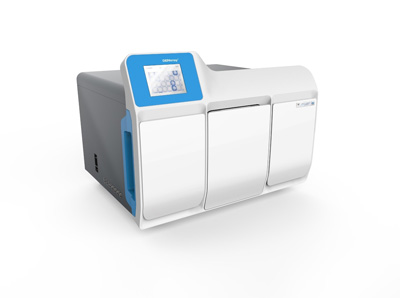Menarini-Silicon Biosystems Unveils Digital Cell-Sorting with Barcode Reader
 Breaking the Heterogeneity Barrier for Next Generation Sequencing
Breaking the Heterogeneity Barrier for Next Generation Sequencing
DEPArray NxT is an automated cell sorting and isolation system that resolves the critical problem of sample heterogeneity that can affect the precision and reliability of downstream NGS analysis and other applications. DEPArray NxT can resolve the issue of FFPE sample analysis, as it can separate cancer cells from stromal cells and infiltrating lymphocytes with 100% precision — even when the starting specimen is minute and of low quality.
DEPArray NxT is also suited to solve the problem of intra-tumor heterogeneity by allowing the separation of tumor subpopulations with different DNA content. Tumor cells undergo dynamic cellular changes over time, constantly generating variant cell subpopulations that spread throughout the body. Heterogeneity inside the tumor cell population itself limits the possibility to identify drivers of tumor development, as low represented clones may actually be the ones responsible for more malignant traits.
In addition to tissue samples, the DEPArray NxT can sort, isolate and recover rare circulating tumor cells (CTCs) from a blood sample with unprecedented sensitivity. The downstream genetic analysis of these cells provides reliable insights into tumor drivers, and allows for the identification of possible molecular targets for therapy and the monitoring of disease progression.
Laser-capture microdissection and flow cytometry-based sorting lack the accuracy and purity required for resolving these challenges. While flow-based methods are capable of producing enriched cell preparations, cell interrogation and collection can only be evaluated relative to degrees of enrichment rather than purity because flow technology is indiscriminate.
Building on the DEPArray Legacy for Single-Cell Precision and Resolution
The DEPArray NxT digital cell-sorting system builds on leading-edge technology to reach the highest level of precision and resolution in separating pure single cells or group of cells for clinical oncology research applications.
"We developed the new instrument as a natural evolution of our DEPArray technology," explained Gianni Medoro, Ph.D., chief technology officer and co-inventor. "The new system is the result of an uncommon synergy between our team of talented biologists and engineers. We listened to our customers and developed a system that meets their needs for faster, more automated sorting and isolation of cells with unmatched single-cell precision."
Designed with a more friendly user interface, the new DEPArray NxT is a benchtop instrument that can fit in any lab space, and allows one to obtain a pure cell preparation in a short time and with reduced operator interaction. Lighter and more compact, it consists of an electronic control module, a fluorescence microscope, a CCD camera, software, and a single-use microfluidic cartridge. It includes an external barcode reader for sample-positive identification and unambiguous operator identification, automatic report generation and advanced tools for image analysis.
The system's proprietary software for image acquisition enables real-time visualization and interaction with all cell populations, and permits quicker selection of cells of interest with an exceptional level of accuracy and reproducibility. Isolated cells remain intact, and live cells remain viable, enabling even the most sensitive and challenging downstream analyses, including mutational or transcriptional profiling.
Harnessing the Power of Dielectrophoresis for Next Generation Sequencing
Applying the principle of dielectrophoresis (DEP), the system traps and moves single cells meeting selection criteria into a collection reservoir. DEP forces induced between upper and lower electrodes embedded in the cartridge trap suspended cells in a two-dimensional grid formation. Thus immobilized, the cells can be rapidly interrogated by image analysis for phenotypic characteristics, such as size, shape, and the presence or absence of one or more target surface proteins. Cells of interest are mobilized and isolated by step-wise transfer to adjacent cages leading to a separate buffer volume within the cartridge for recovery on a 96-well plate.
About Menarini-Silicon Biosystems
Menarini-Silicon Biosystems, based in San Diego, Calif., and Bologna, Italy, is a wholly owned subsidiary of the Menarini Group, a multinational pharmaceutical, biotechnology and diagnostics company headquartered in Florence, Italy, with a heritage of over 130 years and over 16,000 employees in more than 100 countries.
---
Other Bar Code News Blogs that may interest you:
- Uniquest joins Invengo’s InPower program as a certified distributor
- GS1 Connect 2016 Unlock the Power of Standards
- ID TECH releases the Augusta, a compact MSR-EMV hybrid card reader
- Lantronix to Report Fiscal 2016 Third Quarter Results on April 28, 2016
- Wearable Payments: Contactless NFC, RFID, and QR/Barcode Payment Technologies
- XY Findables Announces Equity Crowdfunding With Launch Of XY3 Item Finder Device
